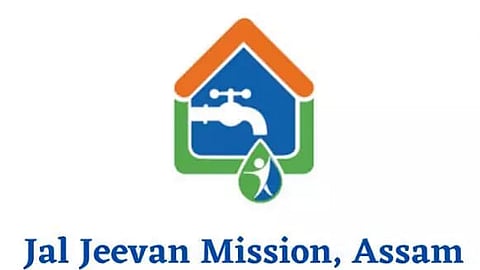
- Home
- Live Blog
- Breaking News
- Top Headlines
- Cities
- NE News
- Sentinel Media
- Sports
- Education
- Jobs

The United Nations' Sustainable Development Goal (SDG) 6 underscores the importance of ensuring clean water and sanitation for all by 2030. India, on its 74th Republic Day, celebrated a significant milestone under the Jal Jeevan Mission (JJM) with over 11 crore rural households gaining access to tap water connections. This remarkable progress has been made since the mission's inception in 2019, when only 16.72% of rural households had such access.
While the current percentage of households with tap water has surged to 56.84%, the ambitious target of providing clean drinking water to every rural household by 2024 appears attainable. However, ensuring the long-term sustainability of these projects and meeting the Bureau of Indian Standards' water quality benchmarks pose significant challenges.
The JJM has galvanized efforts at the state and Union Territory levels, significantly accelerating the pace of implementation. The mission requires states and UTs to:
Conduct annual tests of drinking water sources for chemical and physical parameters.
Test for bacteriological parameters biannually.
To facilitate this, up to 2% of the annual JJM allocation can be utilized for water quality monitoring and surveillance activities, including setting up testing laboratories at various administrative levels.
India now boasts over 2,000 drinking water testing laboratories, though the distribution and capacity vary across states. For instance, Assam has 83 laboratories, but its 26,395 villages highlight the pressing need for more facilities to meet the guidelines effectively.
Data from the Water Quality Management Information System portal reveals concerning statistics:
Out of 2,64,628 water samples tested in Assam, 19,491 were contaminated.
Nationwide, 9.24 lakh samples were found contaminated.
These figures underscore the urgency of prioritizing water quality testing. Contamination often arises from natural chemicals (like arsenic, fluoride, and uranium), agricultural practices (fertilizers and pesticides), industrial processes (heavy metals), and microbial pollutants from wastewater systems. Such contamination can lead to severe health issues if untreated water is consumed.
JJM emphasizes community involvement, particularly empowering women, to ensure water safety:
Five individuals, preferably women, are trained in each village to test water quality using Field Test Kits (FTKs).
Over 17 lakh women have been trained under the mission, a laudable achievement.
Despite this progress, the lack of adequate testing laboratories and trained technicians hampers the optimal use of this expertise. The average turnaround time for water quality testing in district laboratories exceeds 48 hours, highlighting the need for more infrastructure and personnel.
Groundwater accounts for over 85% of rural India's drinking water supply, making its judicious use and contamination prevention critical. Recent reports indicate that:
93% of water samples were free of bacteriological contamination.
However, 24% of households had permissible traces of residual chlorine, which could become problematic during sudden contamination incidents.
Anganwadi centers and schools reported chlorine levels exceeding safe limits, posing potential hazards.
These findings call for better localized dosing methods for purification and stricter monitoring to prevent health risks.
To achieve the goals of the Jal Jeevan Mission and SDG 6, India must focus on:
Expanding Testing Infrastructure: Increasing the number of water testing laboratories and equipping them with trained personnel and necessary reagents.
Enhancing Community Awareness: Educating rural households about water quality and fostering a sense of ownership.
Strengthening Monitoring: Ensuring regular inspection of pipe networks to prevent contamination.
Sustainable Water Use: Promoting the conservation of groundwater and preventing over-extraction.
The National Report on the Functionality Assessment of Household Tap Connections (2022) highlights several challenges, but also opportunities for improvement. By addressing these gaps, India can secure its progress under the Jal Jeevan Mission and set a global example in achieving sustainable water management.
ALSO WATCH: